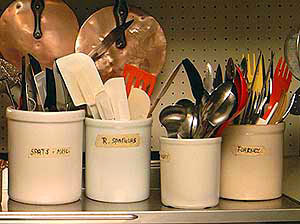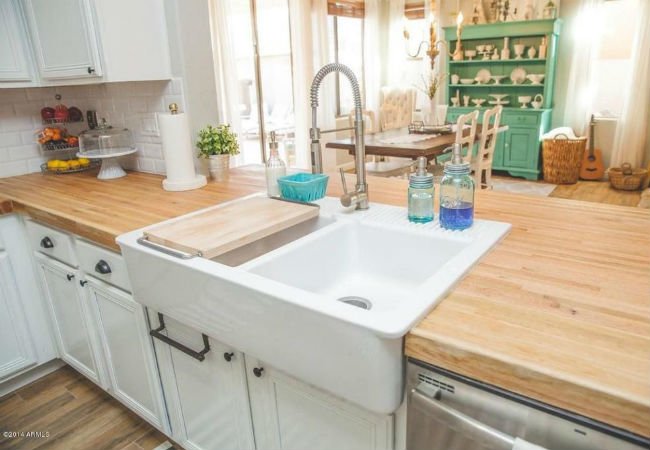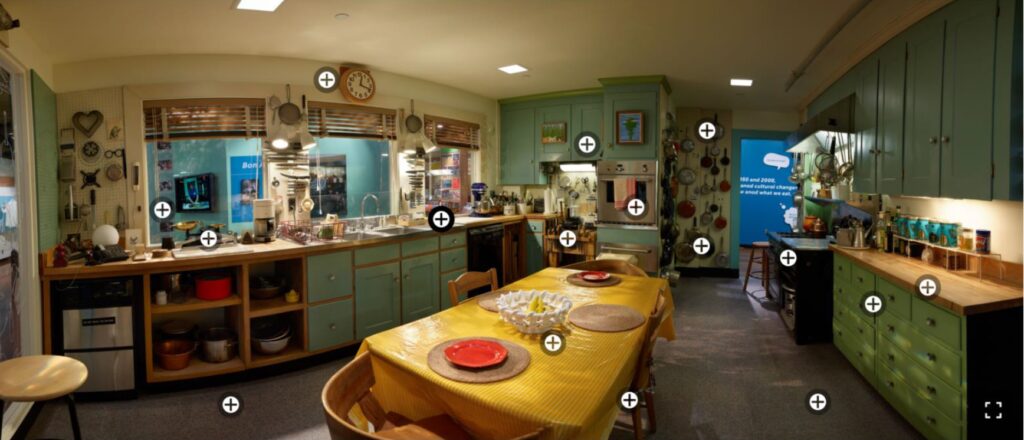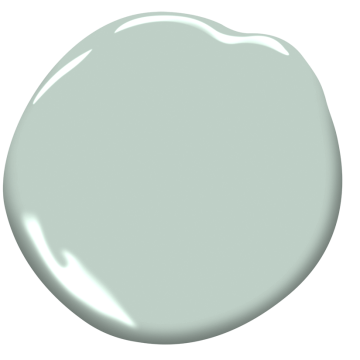5 Home Design Tips and a Holiday Secret from America’s First Celebrity Chef
For those who know me, cooking is not my forté. It is not for lack of trying, I am simply a total disaster in the kitchen. The most important culinary tool I own is a fire extinguisher, which is fortuitous since the last time I attempted a salmon dish with wine I set the kitchen on fire (thankfully for only 2 seconds but enough to freak my dog out and create black smudge all along the backsplash).
My cooking ineptitude has been a long-running joke in my family since they are all involved in the family business of food service and culinary expertise. Thus, as we gather this week for Thanksgiving, I will once again be relegated to the store bought or stove-avoiding simple hors d’oeuvres and salads since I lack the chef gene (which is OK by me as it gives me more time for writing and creating SketchUp home designs.) But this does beg the question why I am enthralled by one of the most famous chefs of our age: Julia Child.
Mastering Kitchen Design the Julia Child Way
When I was researching my first book, which was published the year I turned 50, I came across an article of the iconic queen of PBS and cooking, Julia Child. What was encouraging for me is Julia wrote her seminal book, “Mastering the Art of French Cooking,” – that turned American housewives from cooks into French chefs – at age 49 and debuted her iconic TV show, “The French Chef,” on the local PBS affiliate station in Boston at age 51. I felt a kindred spirit with Julia and was encouraged you can chase your dreams even after 50. This feeling has spurred me on ever since.
In 2019 I was speaking at a conference in Washington, D.C. and I made a side trip to see Julia Child’s famous kitchen in The Smithsonian’s Natural Museum of American History. I was just beginning my research for my upcoming book, The Snug Home, and I was inspired by some of the things I spotted in Julia’s real-world kitchen where the PBS show was filmed the last few years in the 90s.
Julia Child wrote an essay for Architectural Digest about her kitchen calling it, “the beating heart and social center of the household … both practical and beautiful, a working laboratory as well as a living and dining room.”
“The kitchen is the beating heart and social center of the home.”
Julia Child
She and her husband, Paul Child, not only designed the famous kitchen to suit Julia’s cooking needs, but paid close attention to the chef’s need for the kitchen to be beautiful, practical and inspirational in its design.
Below I share five things that show Julia was not only an early pioneer in gourmet cooking at home but also a visionary in how to adapt your home – or in this case, your kitchen – to meet your needs into your 70s, 80s and 90s. Beyond design, Julia was also a believer in a stress-free life. Thus, I also share below one of Julia Child’s tried and true “stress-free recipes” for Thanksgiving, even for the cooking-challenged like me.
1. Adapt and Adopt New Technology To Meet Your Needs
Standing 6 feet 3 inches, Julia adapted her countertops to her tall height to avoid constant stooping and back aches. Her 38-inch high instead of the standard 36-inch countertops are a perfect example of adaptation which is the essence of universal design. As well, Julia, who loved the history and purity of French cuisine (“With enough butter, anything tastes good!”) was not shy of using the latest technology to help out a busy chef. She was an early adopter of new tools such as Cuisinarts and KitchenAid mixers and called these devices “the new French Revolution.”
Since Julia loved new technology, I believe she would have been game to install the adjustable height counters that we see today in universal design homes. She also would have been on board with the smart plugs that allow existing kitchen appliances, such as toasters, coffeemakers, microwaves and more to be turned into smart kitchen devices.
And, although Julia loved her “Big Garland” commercial gas range, she liked the handiness of her electric wall oven which had become a popular option for kitchens in the 60s, with Julia as one of its earliest fans. The convenience of having an oven that can be opened without stooping and inserting or removing heavy or hot pans at a waist level appeals to all ages. With a nod to her love of all things French, Julia would have loved the oven models that include French Doors which are easier for older cooks to open side doors than to pull down oven doors that may be heavy or too hot.
2. Create Visual Clues
While handy eyeglasses help with reading labels, recipes and ingredients, Julia was a big believer in making her own prominent labels and having utensils out of drawers where they could be easily found. She used crocks set on countertops to house all her utensils and gave them fun names – Spoonery, Forkery, Wooden Things and Spats (for spatulas). Rayna Green, the curator of the Julia Child exhibit at The Smithsonian, told The Litchfield County Times that Julia “was a gadget freak and a knife freak, as she put it. She never met a knife she didn’t like.”
By labeling important tools in the kitchen, it makes it easier not to search for knives in drawers (which can be dangerous and also dull the blades). Whether it is utensils or pantry items, labeling is helpful for dementia adults living at home. She also had her “Dos and Don’ts” for her garbage disposal on blue embossed labels taped to the wall above the device. Using taped notes, visual labels or Paul Child’s idea of a pegboard to hold the various pans – all with an outline painted in the shape of the pan for easy replacement – are all recommendations we use in universal design and dementia home design.
3. Bring Nature Inside
A big home design trend for 2022 is to blend natural elements (wood, water, air, fire) into home design whether you are a fan of modern, farmhouse, coastal, traditional or eclectic style aesthetic. Julia’s countertops were maple butcher blocks to make food prep and cutting easy anywhere around the kitchen (even though she also used cutting boards she liked the continuity of the wood design). This natural wood element in kitchen design is both practical but also healthful as natural elements are part of the biophilic design philosophy for creating enhanced wellness in every space of the home.
4. Design With Inspiration
Fans of Julia’s TV shows will remember she had three distinct paintings hanging in the kitchen that spoke to her affection for cats, asparagus and artichokes. These framed art pieces hung near the busy stove area and were attached to the front of the cabinets. While some may like cleaner, sleeker looks in the kitchen, Julia embraced eclectic design for inspiration. These visual reminders are great hung in a place where you work or spend a lot of time. They help boost mood when you face frustrations or stress (such as with my chocolate souffle disasters).
5. Use Color to Boost Emotional Health
Julia’s blue-green kitchen cabinets are almost as famous as her recipe for beef bourguignon. In fact, the paint color is one of the most popular visitor questions The Smithsonian receives. For would-be Julias looking to recreate her kitchen magic through the inspiration of paint colors, the actual original paint color is unknown. Some contend Paul Child mixed the exact color to his wife’s delight and she was interviewed in Smithsonian Magazine saying, “It’s certainly the soul of our house, and that’s one reason Paul designed it the way he did with nice colors. It’s an attractive room, I think. It’s a work room that’s good looking.”
When the museum repainted the exhibit ceiling a few years ago, the master painter found an exact match to the cabinet colors: Benjamin Moore Bali 702. The Smithsonian says other colors close to the original include: Benjamin Moore’s “Covington Blue,” “Sherwood Green,” or possibly “Stem Green.”
Expert designers point to more color in the kitchen as a major design trend for 2022. Green, which is in the middle of the visual color spectrum, is not only easy for aging eyes to distinguish but also incorporates the biophilic design principles for calming yet energizing colors. In fact, green is THE color chosen as color of the year for 2022 by several paint manufacturers and was found to be the most optimistic color according to a study published in Psychology and Aging.
Read more about biophilic design:
Julia’s Secret Thanksgiving Meal Tip
For family caregivers, holidays can be frantic, particularly if you are hosting family and friends, gathering kids together to see the grandparents or prepping and cooking the meal. If it helps lighten your load from thinking everything has to be homecooked and perfect, take this secret tip from America’s most famous chef.
Despite her fame for French cooking, the All-American Thanksgiving was a holiday made for Julia Child with her mouth-watering roasted turkey recipe on the top of every cook’s list. In fact, she inspired so many cooks on this special day, a New York Times article reported that Julia refused to remove her home phone number from the telephone book taking calls all day long from anxious, frantic cooks across the country.
However renowned for her culinary skills, Julia was not too snooty for store-bought goodies. According to her nephew, Paul Prud’homme, one of Julia’s favorite and long-standing Thanksgiving hors d’oeuvres was goldfish crackers served alongside husband Paul’s magical “reverse martini” cocktail, also known as the Upside Down Martini: vermouth on the rocks with a floater of gin.
Now that sounds like a recipe even I could manage. As Julia would say, “Bon Appetit!” and Happy Turkey Day everyone!
©2021 Sherri Snelling






















0 Comments